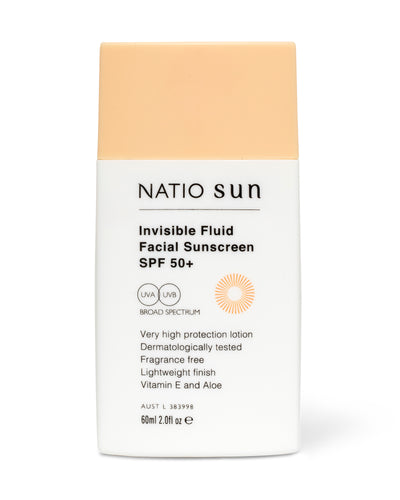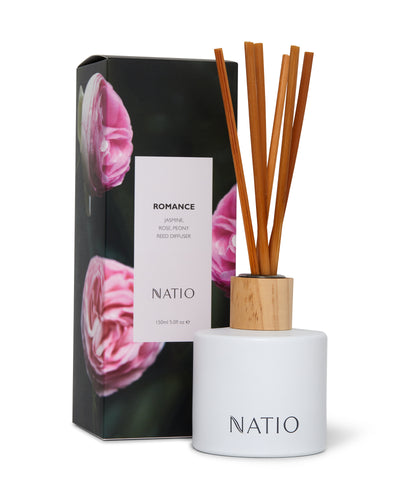
Sunscreen Traditional vs Physical – how do they differ, and which one is for me?
Regardless of whether you prefer a traditional or physical sunscreen, SPF is a paramount protector of skin from the sun's rays. To help clarify some of the vast information out there, and debunk some of the mistruths, here are some key facts to keep in mind when selecting your sun protection.
Traditional Sunscreen
This sunscreen works as a sponge, absorbing the sun’s UVA/UVB rays, converting the rays into heat, and releasing them from the body. Many active chemical compounds work together to create the sponge effect. Traditional sunscreens penetrate the epidermis and dermis. This formulation is easier to rub into skin without leaving a white residue.
The new Natio Sun collection has four traditional sunscreen options to choose from.

Physical Sunscreen
This sunscreen works like a shield on the skin. It sits on the surface of your skin, deflecting the sun’s rays. Zinc Oxide is the most common sun shield referred to as a Natural Mineral. Physical sunscreens offer Broad spectrum protection by sitting on the skin. Some people may select a Mineral sunscreen if they have Sensitive skin, making it a great option for children 6 months and above.
The new Natio Sun collection features a physical sunscreen option, a Clear Zinc Mineral Sunscreen SPF 50.

Physical Sunscreens – Top questions answered
How does a physical/mineral Sunscreen work?
(Differing from a Traditional Sunscreen) It works as a UV reflector rather than UV absorber like traditional sunscreens. Particles of zinc oxide reflect the UV light.
How soon can you go into the sun after application?
Around 20 minutes after the application as a general guide.
How often do you need to re-apply?
Every 2 hours and after every swim, towel dry or heavy sweating.
Why have you used Zinc Oxide instead of Titanium Oxide?
Titanium dioxide leaves a white film unlike the micronized zinc oxide that has been used to formulate the Clear Zinc Mineral Sunscreen SPF 50.
How does a Physical/Mineral protect from the sun rays?
It reflects the sun’s rays.
Is there a specific Zinc Oxide level to look for?
SPF 50 starts at around 20% of zinc oxide. Majority of customers prefer micronized zinc oxide (Zinc oxide can be 'micronized,' meaning it is processed into small particles, so small that the preparation appears clear when applied on the skin).
Why is a Mineral better for sensitive skin?
Many Customers find less irritation from the mineral than from the traditional actives.
What does “reef safe” or “reef friendly” mean?
Unfortunately, the term “reef friendly” is not currently regulated. It is important to check the “active ingredients” label on the back of your sunscreen to ensure that potentially reef-harming chemicals are not present. A mineral sunscreen has been defined to not contain any ingredients known as unsafe for the reef ocean. By making sure your sunscreen does not contain oxybenzone or octinoxate; the two common UV blocking sun filters that some studies have indicated may contribute to coral bleaching.
How can I best protect my skin from the damaging effects of the sun?
Sunscreens are only one component of sun protection. To get the best result from your sun protection products always ensure that you read the label and follow the directions for use. Prolonged high-risk sun exposure should be avoided. Frequent use and re-application in accordance with the product directions are required for effective sun protection. In complement to sun protection products slip, slop, slap, seek and slide. SunSmart recommends that you Slip on clothing that covers as much skin as possible. Slop on an SPF 50 (or higher) broad-spectrum, water-resistant sunscreen. Slap on a broad-brimmed hat that shades the face, ears and neck. Seek shade, and Slide on sunglasses that meet the Australian Standard for UV protection.
Always read the label and follow the directions for use. Sunscreens are only one component of sun protection. Prolonged high-risk sun exposure should be avoided. Frequent use and re-application in accordance with directions is required for effective sun protection.




